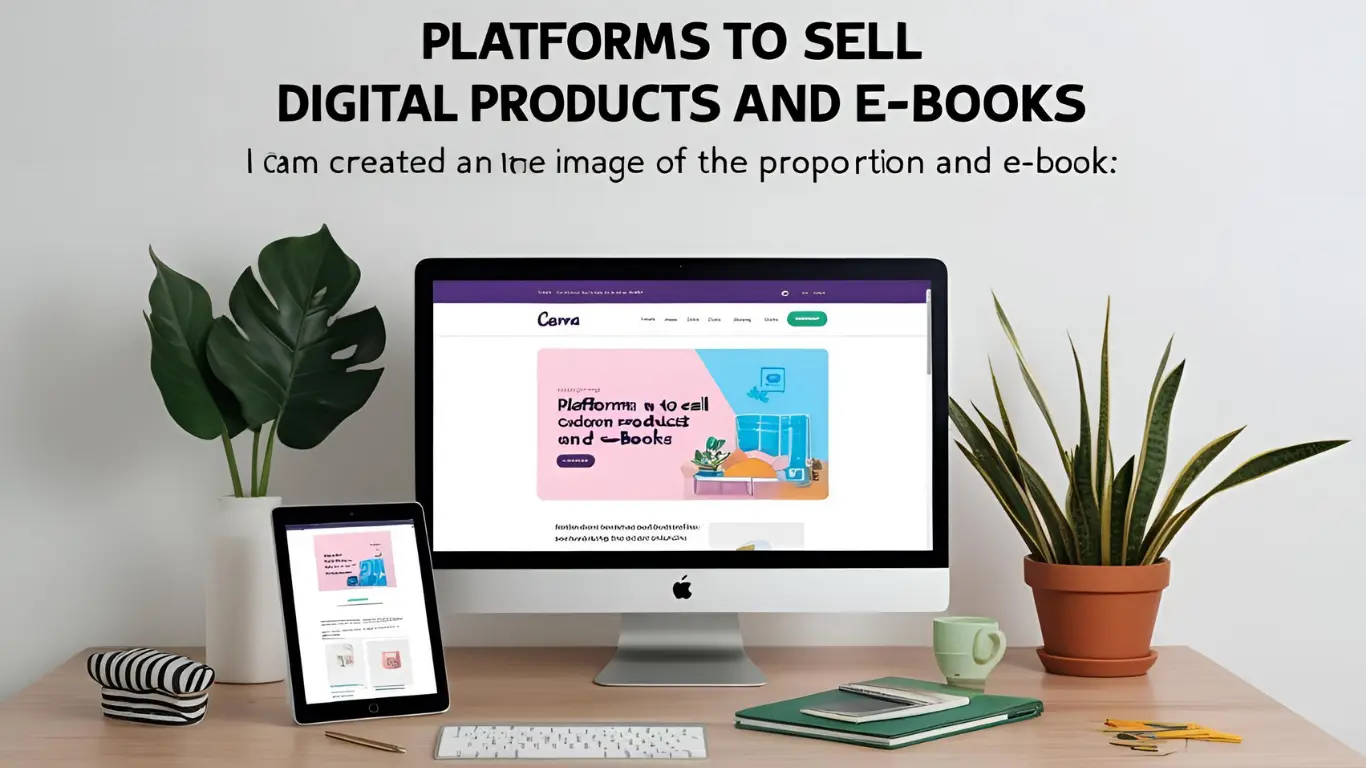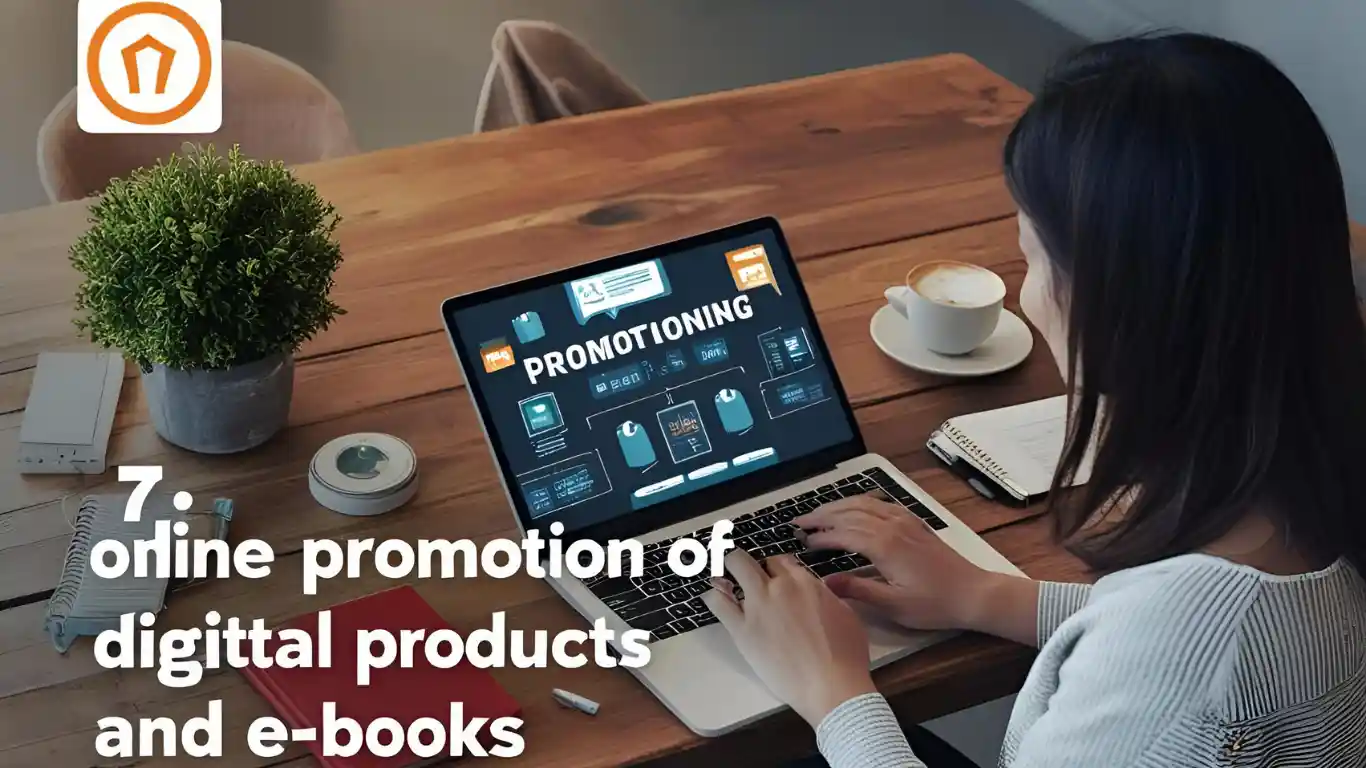The digital age gives people unprecedented ease for generating money through internet platforms. The sale of digital products and e-books presents users with the most profitable avenue to earn passive income. Whether you’re a writer, designer, educator, or entrepreneur, you can create and sell digital products with minimal investment and no inventory hassle.
The rising market demand for digital items stems from their ability to perform multiple sales without needing further manufacturing expenses. The long-lasting nature of digital merchandise including e-books courses and templates gives users sustained financial opportunities. If you’ve ever wondered how to sell digital products and make money with e-books, this guide will walk you through the entire process step by step.
1. Understanding Digital Products and E-books

What Are Digital Products?
Digital products are non-physical inventory assets which marketers sell online while avoiding the need for storing physical merchandise. E-books along with courses, templates, graphics, software and additional digital items form the product base. The buyers receive electronic files that become instantly available right after transaction completion.
Types of Digital Products That Sell Well
Highly profitable digital inventory types consist of the following products:
The business book genre along with novels and tutorials and self-help guides and business books are all examples of E-books.
Online Courses – Video and text-based educational content
Printables and Templates – Resume templates, planners, business forms
Stock Photos and Graphics – Logos, illustrations, and design elements
Music and Audio Files – Soundtracks, meditation music, voiceovers
Why E-books Are a Great Digital Product to Sell
Creating and selling E-books stands as one of the simplest methods involving digital products. E-books need basic technical skills for their creation while being available for production on any subject at hand. The monetization of e-books allows authors to generate income through various methods such as direct sales to customers and conjunctions with other products and their use as free promotional content.
2. Benefits of Selling Digital Products and E-books
Digital products along with e-books provide multiple advantageous features for sellers.
Your digital products require minimal capital investment because they produce significant profits without needing storage or shipping. Digital products that exist once created become possible to sell eternally without requiring further costs.
Digital product sales deliver passive cash flow opportunities which operate independently during sleep time unlike standard businesses and freelance work.
✔ Global Reach – Sell to customers worldwide without geographical limitations.
The delivery of digital downloads happens immediately without shipping needs which minimizes logistical expenses.
Digital products enable repeated selling with negligible effort to allow quick business expansion.
3. When Deciding what Digital Product to Sell it is Vital to make the Correct Selection
Profits reach their highest potential through selecting an appropriate digital product. Here’s how:
1. Choose a Specified Market Segment while Determining Who Your Products Should Target
Establish a specialized market segment according to your skills and interests together with the current market interest. Popular niches include:
Self-improvement (Personal growth, mental health, motivation)
Essentials of investment and business strategy (Investing and entrepreneurship and budgeting) belong to the Finance & Business category.
Users interested in weight loss programs along with nutrition guidelines and yoga practices choose this option.
Technology & Online Skills (Coding, digital marketing, graphic design)
2. Research Trending Digital Products
You can discover popular products through Google Trends in addition to Amazon Kindle Bestsellers and forums present on the internet.
3. Create Unique and High-Quality Content
The market requires products that deliver remarkable value while being well designed and excluding copying from competitors.
4. How to Create an E-book That Sells
The process of writing an e-book proves much simpler than many individuals might expect. Follow these steps:
Step 1: Choose a Profitable Topic
The selected topic should address existing problems and fill existing gaps of requirements. The first step should be to identify popular keywords through research.
The Second Step Requires both Planning and Writing your Content
The first step involves drawing up an outline containing chapter breakdowns along with subtopics.
Write engaging and informative content
Arrange the content with basic terms rather than complex jargon and write in an easy-going manner.
During Step 3 you must Both Design and Format your E-book
Three professional design applications available for your needs are Canva, Scrivener, and Adobe InDesign.
Choose professional fonts and layouts
Different visual components and charts and images should be incorporated to enhance the readability
Step 4: Add Bonuses and Extras
The inclusion of free worksheets together with checklists and access to exclusive material will boost the appeal of your e-book.
5. Platforms to Sell Digital Products and E-books

When deciding which platform to use it becomes vital to achieve maximum sales and attract customers from worldwide locations. These prove to be the best options for your consideration:
1. Amazon Kindle Direct Publishing (KDP)
Amazon KDP functions as one of the main platforms for users to market their e-books. By using this service self-publishing e-book authors can gain access to worldwide markets with millions of potential buyers.
✔ Pros:
Huge customer base
Easy-to-use publishing tools
Offers Kindle Unlimited and KDP Select for more earnings
✘ Cons:
The platform deducts a fee from every completed sale that occurs through its platform.
Strict formatting guidelines
2. Gumroad, Sellfy, and Other Marketplaces
Through platforms such as Gumroad, Sellfy and Payhip creators have direct access to sell their e-books together with courses and digital items.
✔ Pros:
User-friendly interface
Instant payouts
Supports multiple payment options
✘ Cons:
The sales need ongoing marketing strategies to attract customer visits.
Some platforms charge transaction fees
3. Selling Through Your Own Website
Creating a website based on WordPress + WooCommerce or Shopify platforms provides creators with complete authority to manage their brand image, price structure, and promotional strategies.
✔ Pros:
No platform fees
Full control over sales and customer data
Better branding opportunities
✘ Cons:
Requires website setup and maintenance
Personal traffic needs to be generated to reach your buyer base.
6. Pricing Strategies for Maximum Profit
Proper pricing of digital products acts as both the lifeblood and death threat of your business operation.
1. Research Market Prices
Research competitors’ prices across Amazon and Gumroad together with other relevant digital platforms. Striking a balance between product costs and business revenue generation.
2. Offer Discounts and Bundles
First customers who purchase early will receive reduced prices.
Multiple digital products can be sold via bundle deals that offer a reduced price to customers.
Short-term deals should be used to generate immediate demand through time-sensitive price reductions.
3. Use Psychological Pricing Techniques
Placing the product price at $9.99 rather than $10 enhances consumer buying patterns.
Different buyers respond to price tiers when they are presented with basic premium and VIP packages.
7. Online Promotion of Digital Products and E-books

Digital products require adequate marketing to generate sales even though they might have excellent quality. Different strategies help you promote your digital items including the following methods:
1. SEO Strategies for Better Visibility
Optimize your product listings with relevant keywords like “sell digital products”, “make money with e-books”, and “passive income digital sales”.
2. Social Media Marketing Techniques
Digital products should be advertised through these specific platforms:
Instagram & Pinterest – Share infographics and testimonials
Facebook & Twitter – Join relevant groups and discussions
Use TikTok alongside YouTube by creating brief videos which showcase the value of your product.
3. Email Marketing and Lead Generation
Provide a free mini-ebook and sample product to people who subscribe via email
A system of programmed email series helps both generate and steer potential customers toward your product offerings.
8. The Technique of Affiliate Marketing Leads to Enhanced Sales Performance
Through affiliate marketing people can endorse your products to earn commissions.
How It Works:
You should enroll in an affiliate marketing scheme through existing programs or develop your own platform by using ThriveCart or Gumroad.
Determine an amount of commission as a percentage from each sale (such as 30% of each sale)
You should find bloggers along with influencers and marketing professionals who will advertise your product.
9. Monetizing Digital Products Beyond E-books
Your revenue growth possibilities exist through these selling options:
Online Courses – Use platforms like Udemy or Teachable
Templates & Printables – Sell Canva templates, planners, and business documents
Premium Membership Content – Offer exclusive content via Patreon or a private website
10. Digital Product Sellers must Stay away from these Typical Errors that affect their Sales Performance
These four mistakes will result in failure:
✔ Mistake #1: Poor Product Quality
Products with substandard quality trigger customer refunds which produce negative reviews. Always proofread and format professionally.
✔ Mistake #2: No Marketing Strategy
A simple product listing fails to generate success. Your plan should contain effective implementations of SEO with social media promotion and email marketing.
✔ Mistake #3: Ignoring Customer Feedback
Pay attention to customer feedback which enables you to modify your product offerings.
✔ Mistake #4: Pricing Too Low or Too High
Strike a middle ground between product prices and earning profits.
11. The Path to Permanent Digital Business Expansion
Money-making success signals the beginning of growth expansion and market expansion.
1. Automate Sales and Customer Support
Your company should deploy chatbots together with automated email systems.
Automated funnels should be established to create a passive income system.
2. Expand to Global Markets
You should present your e-books in multiple languages
Accept international payment methods
3. Your Digital Products ought to Develop an Individual Brand Identity
Realize personal brand value through using social media platforms as a platform
Design a website that provides useful free material to draw in visitors
12. Future Trends in Digital Product Sales
An evolution occurs in the digital product sector. Here’s what to watch for:
AI tools including ChatGPT enable users to create content through automated systems faster before they start writing.
More consumers today choose subscription-based digital products over paying for them once.
Blockchain and NFTs represent how people will obtain digital ownership and license assets in the coming years.
Conclusion
Establishing a passive income stream through digital sales of e-books along with other digital merchandise remains an optimal business strategy. The digital sales business model lets you achieve financial independence by requiring little investment while giving big profit margins across worldwide markets. Whether you choose to sell digital products on Amazon, Gumroad, or your own website, success depends on quality, marketing, and pricing strategies.
Begin by selecting your market segment then create valuable content which you should market properly. Your digital product sales will develop into a reliable online business as time progresses.
FAQs
1. Which online platform would offer the best conditions to sell e-books?
You should consider using Amazon KDP, Gumroad along with your very own website platform to sell digital products. The platforms have different advantages and disadvantages based on what you require.
2. What amount of revenue does digital product selling provide?
Your monthly revenue from digital sales depends on your product quality and marketing capabilities since profitable sellers earn between $500 and $10,000+ annually.
3. Do I need technical skills to create and sell digital products?
Not necessarily. Users can produce and promote e-books and courses and make templates using simple efficiency tools available without knowledge of programming.
4. I need methods to prevent unauthorized distribution of my digital products.
Attaching watermarks while using licensing agreements and implementing DRM (Digital Rights Management) stops unauthorized sharing of products.
5. What are the available free solutions to develop e-books?
The free writing and formatting tools for professional e-book production include Canva and Google Docs together with Reedsy and Scrivener.

